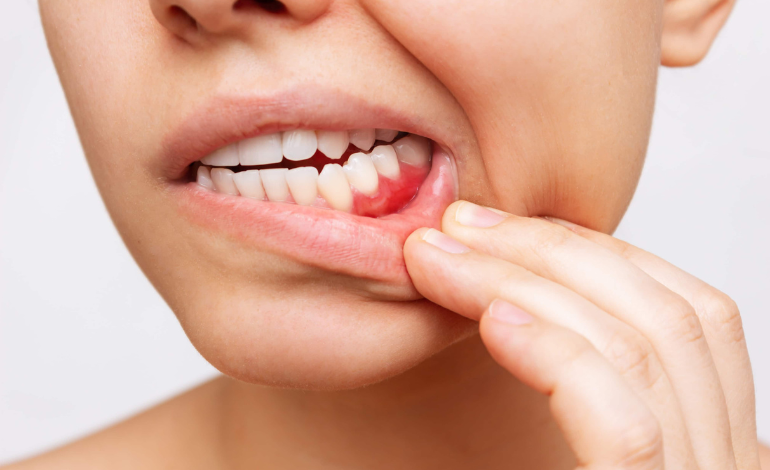Gum Infection Progresses Through Two Key Phases
Gingivitis : This is the least serious stage of gum disease and, with adequate oral hygiene, can be reversible. It consists of gums that appear red and swollen and can bleed with brushing or flossing.
Periodontitis : This is a more serious manifestation in which the inflammation involves supporting tissues (bone), and hence teeth loss can occur. This stage can cause tooth looseness that will eventually lead to completely lost teeth when reached in a severe case.
Common Key Signs and Symptoms of Periodontal (Gum)Diseases
Gum Irritation
Early signs of gum disease include gum irritation. Whenever your gums are red, swollen, or even tender, it could be a sign that something is wrong and might become major if things progress undetected because healthy gums should generally be firm and pale pink. Be aware of these changes.
Bleeding Gums
If your gums percolate when you brush or floss, there's a high chance of having gum disease. Bleeding is not the norm. Healthy gums are not supposed to bleed easily; their presence can lead to other serious conditions if ignored.
Persistent Bad Breath
Chronic bad breath is sometimes associated with gum disease. Bacteria causing gum infection are aggressive and produce foul-smelling compounds that contribute to chronic bad odor that is not responsive to brushing. You need to see a dental professional at this stage.
Receding Gums
Another important sign of gum disease is a receding gum. If your gums seem to be pulling away from the surfaces of your teeth, exposing more of the tooth or its root, it can be a major problem. Receding gums can also cause teeth to feel bitter from every nuance, and your smile may look different.
Loose teeth
Advanced gum disease will cause the supporting bone around your teeth to break down, and this can cause them to loosen. If you feel your teeth are wiggling, you need to see a dentist right away to avoid more severe damage.
Changes in Bite
Another obvious change could be noticed in your bite or the way your teeth align. It is usually caused by the destruction of the supporting structures of the teeth, changing their spot. If you feel any such deviation, you must immediately see your dentist.
Pus Between Teeth and Gums
The appearance of pus between your teeth and gums indicates a high degree of infection. This symptom is usually accompanied by swelling and pain. Prompt dental care should be sought in this case.
Why Early Treatment Matters for Gum Disease
Preventing Tooth Loss
The primary reason for early treatment of gum disease is the risk of loss of teeth. Although gingivitis generally proves reversible with proper oral hygiene and professional cleaning, it will soon progress into periodontitis, which can cause extensive damage to the surrounding structures supporting the teeth. Once lost, some teeth are difficult to replace.
Reducing Health Risks
More recent studies have suggested a link between gum disease and various systemic conditions, including heart disease, diabetes, and respiratory infections. Early treatment may assist in gum diseases to ensure oral health and avoid or minimize the potential of severe conditions.
Cost-Effectiveness
The earlier that gum disease is treated, the more comfortable and more cost-effective it is. It saves you time and money if you see the dentist regularly for check-ups and cleanings, thereby diagnosing the onset of gum disease early on.
Improving Quality of Life
Healthy gums and good oral health allow for the maintenance of a better quality of life. A good feeling in your mouth allows you to eat and drink with pleasure without discomfort. Furthermore, proper treatment of gum disease improves your smile, making you feel more confident.
Healthy Habits
The importance of performing good oral hygiene practices overall is underlined in taking early gum disease treatment. With a top professional dentist , you are better equipped to develop an individualized care program for preventive future conditions and promote lasting habits in dental health.
Conclusion
Gum disease is a serious yet preventable condition that can significantly affect your health. Recognizing the early signs and seeking appropriate treatment can make a huge difference in both your oral and overall health. Regular dental check-ups , proper brushing and flossing techniques, and a proactive approach to oral care are key to maintaining healthy gums. Don’t ignore the warning signs—take control of your oral health today for a healthier, brighter future.

















